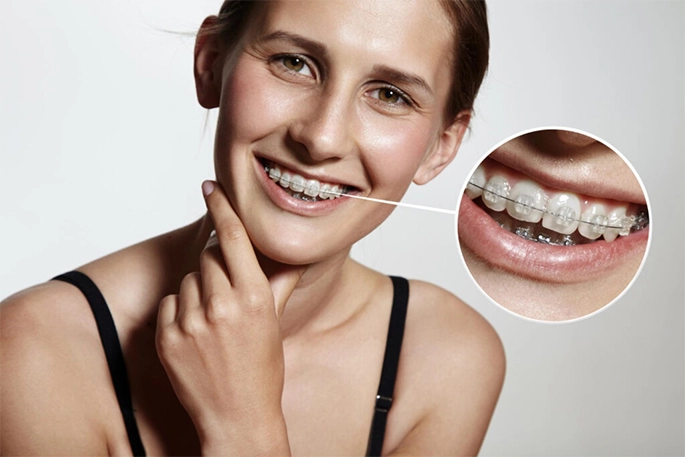When considering orthodontic treatment, one of the most common questions patients ask is whether age affects the results and experience of braces. Many families explore options for teenagers, while adults often wonder if it’s too late to start. Today, advanced orthodontics makes it possible for both age groups to achieve beautiful smiles with Teeth Braces in Dubai. However, there are distinct differences in treatment timelines, comfort, and goals between teen braces and adult braces that patients should understand before making a decision.
Biological Differences Between Teens and Adults:
Teenagers often experience faster results with braces because their jawbones are still developing, making it easier to guide teeth into alignment. Adults, on the other hand, have fully developed bones, so orthodontic treatment may take longer. Additionally, adults may deal with pre-existing dental issues such as gum disease or bone loss that must be addressed before starting braces.
Treatment Duration and Efficiency:
For teens, orthodontic treatment typically lasts between 18 to 24 months, thanks to their growing jaw and teeth flexibility. In contrast, adult braces may take slightly longer, often extending to 24 to 36 months depending on case complexity. The difference in efficiency stems from the adaptability of younger tissues versus the rigidity of mature dental structures.
Common Orthodontic Issues in Teens:
Teenagers usually require braces to correct misaligned bites, crowding, gaps, or protruding teeth. These issues often arise naturally during growth and are easier to correct when treated early. Since teens are still developing, orthodontists can use braces to guide proper jaw development and prevent future complications.
Common Orthodontic Issues in Adults:
Adults seek braces for different reasons, often linked to cosmetic concerns or relapse from not wearing retainers after childhood treatment. Common issues include mild crowding, spacing, or bite irregularities. In many cases, adults also choose orthodontics to improve oral health by making cleaning easier and reducing risks of gum disease or tooth decay.
Types of Braces Available for Teens:
Orthodontic options for teenagers often focus on effectiveness and durability. Popular choices include:
- Metal braces: The most common option, effective for complex cases.
- Ceramic braces: Tooth-colored brackets that are less noticeable.
- Self-ligating braces: Use special clips to reduce friction and shorten treatment time.
Types of Braces Available for Adults:
Adults typically prioritize aesthetics and convenience in their orthodontic journey. Popular options include:
- Ceramic braces: Blending with natural teeth for subtlety.
- Lingual braces: Placed behind the teeth, completely hidden.
- Clear aligners: Removable, transparent trays that offer comfort and discretion.
Lifestyle Considerations for Teens:
Teenagers usually adapt quickly to braces, but they may need guidance on maintaining oral hygiene and avoiding foods that damage brackets. Sports activities may require wearing protective mouthguards. Social confidence may also be a concern, but many teens embrace braces as a normal part of growing up.
Lifestyle Considerations for Adults:
For adults, braces can present lifestyle challenges such as workplace interactions, professional image, and diet restrictions. Clear aligners and lingual braces often appeal to adults who prefer discreet treatment. Adults also tend to be more disciplined with oral hygiene and follow treatment plans more strictly compared to teens.
Cost Differences Between Teen and Adult Braces:
The cost of braces largely depends on the type chosen rather than the patient’s age. However, since adults may require longer treatment or additional procedures such as periodontal care, their overall expenses can be higher. Teen braces are often more straightforward, making them slightly more affordable in most cases.
Psychological Impact of Braces:
For teens, braces can influence self-esteem, particularly during sensitive developmental years. Support from family and peers helps them stay positive throughout treatment. Adults, on the other hand, often feel more motivated by the promise of improved appearance and oral health. Many adults report a boost in confidence once treatment is complete, viewing braces as a worthwhile investment.
Long-Term Outcomes:
Both teens and adults can achieve equally excellent results with braces. The main difference lies in the path taken to get there—teens often see quicker results due to biological factors, while adults may require more patience. With proper aftercare, including wearing retainers, both age groups can enjoy straight, healthy smiles for life.
Final Thoughts:
Teeth Braces in Dubai are effective for both teenagers and adults, but the journey differs in terms of duration, lifestyle impact, and treatment options. Teens benefit from faster results due to ongoing growth, while adults enjoy a wider variety of discreet orthodontic solutions tailored to professional and personal needs. Regardless of age, the ultimate reward is a healthier smile, improved function, and boosted confidence. Choosing the right braces comes down to lifestyle priorities and professional guidance from a skilled orthodontist.

